Re-naturing cities through phytoremediation: How Nature Based Solutions can make a difference.
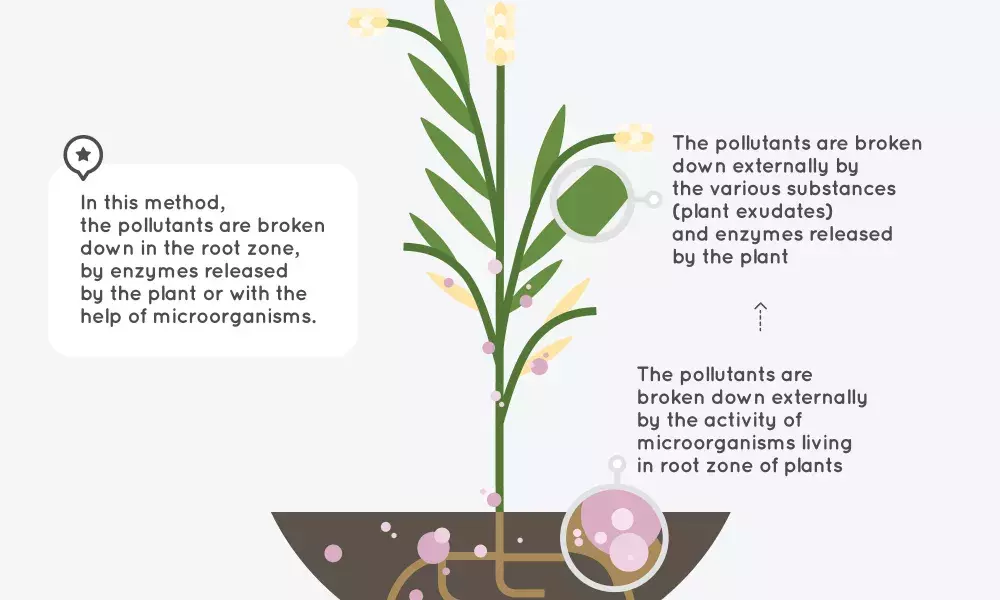
The core proposal relies on phytoremediation technology, a Nature-Based Solution (NSB). SPIRE has examined this green method for the remediation capacity of historic contamination of soil due to Baia Mare‘s industrial past. Based on scientific evidence, this project aims to prove that this long-term action, counting on nature’s restorative capabilities, is not only feasible but preferable compared to other more invasive and expensive methodologies. Alongside this, its potential to be scaled up is promising.

The local community is actively involved in the re-naturalization of the five selected pilot sites in the city by contributing to the decision process on the transformation of underused urban space into an attractive safe outdoor space through landscaping.
What do NBS and phytoremediation technics offer for soil contamination remediation and brownfield development?
Nature-Based Solutions (NSB) are defined by European Commission as “solutions that are inspired and supported by nature, which are cost-effective, simultaneously provide environmental, social and economic benefits and help build resilience. Such solutions bring more, and more diverse, nature and natural features and processes into cities, landscapes and seascapes, through locally adapted, resource-efficient and systemic interventions".
Within the SPIRE project, NBS phytoremediation techniques use plants to clean up contaminated land and remove Heavy Metals from the soil. On the one hand, it constitutes a cost-effective and ecological alternative to more common physical remediation methods; on the other hand, it requires more time, being a slower solution. Thanks to this green technology, former urban contaminated land (5 pilot sites) can be restored and re-inserted into the ecosystems that service to the city, providing healed land for the future of the urban system.
Phytoremediation technology for soil is classified into the following categories: phytoextraction, phytostabilization, rhizofiltration, phytodegradation, and phytovolatilization. Not all plants are suitable or equally efficient for phytoremediation. The ability of the plant to account for the decrease in soil metal concentrations as a function of metal uptake and biomass production plays a vital role in achieving regulatory acceptance. Depending on heavy metal concentration in the contaminated soil and the target values sought for in the remediated soil, phytoextraction may involve repeated cropping of the plant until the metal concentration drops to acceptable levels (SPIRE - Technical Report D.6.2.11). An important consideration in this matter is the tree and plant selection. Existing plant species that currently perform phytoremediation at the pilot sites are integrated into the landscaping plan because of their optimal adaptation to the local conditions.





Fig. 2/3/4/5/6: Phytoremediation technics. Source: Celaya Alvarez, Amaia - based on Naturvårdsverket och Boverket (2006) Förorenade områden och fysisk planering. Rapport 5608: ISBN1/5600/91-620- 5608-5/.
Why is phytoremediation linked to adaptation and climate resilience?
The impact of climate change on natural and human systems is spread all over the world. The observed effects of climate change bring the sensitivity of urban systems to the forefront. Without action, the average global surface temperature is expected to increase, more than 3°C on average. Climate resilience actions are therefore an imperative for the future.
Adaptation resilience-building measures reduce the risk of disaster from extreme weather events, and carry many benefits for the public, (including an improvement in the environmental quality of air, water, and soil. Increasing the space accessible green spaces, is one of the critical features of adapted cities, leading to a clear improvement in public health and mental wellbeing. The lack of short-term results prevents some cities from investing in adaptation and climate resilience measures. At the same time, the real impact and long-term positive consequences are a matter of fact.
Baia Mare's urban system is vulnerable to extreme climate phenomena due to its geographical position in an intra-hill valley surrounded by mountains. The main natural hazards related to climatic phenomena rely on the likelihood of hail and thunderstorms and fog and acid deposition. This orographic and climatic situation, combined with its industrial past and the current public health consequences of pollution, renders the city fragile to climate change.
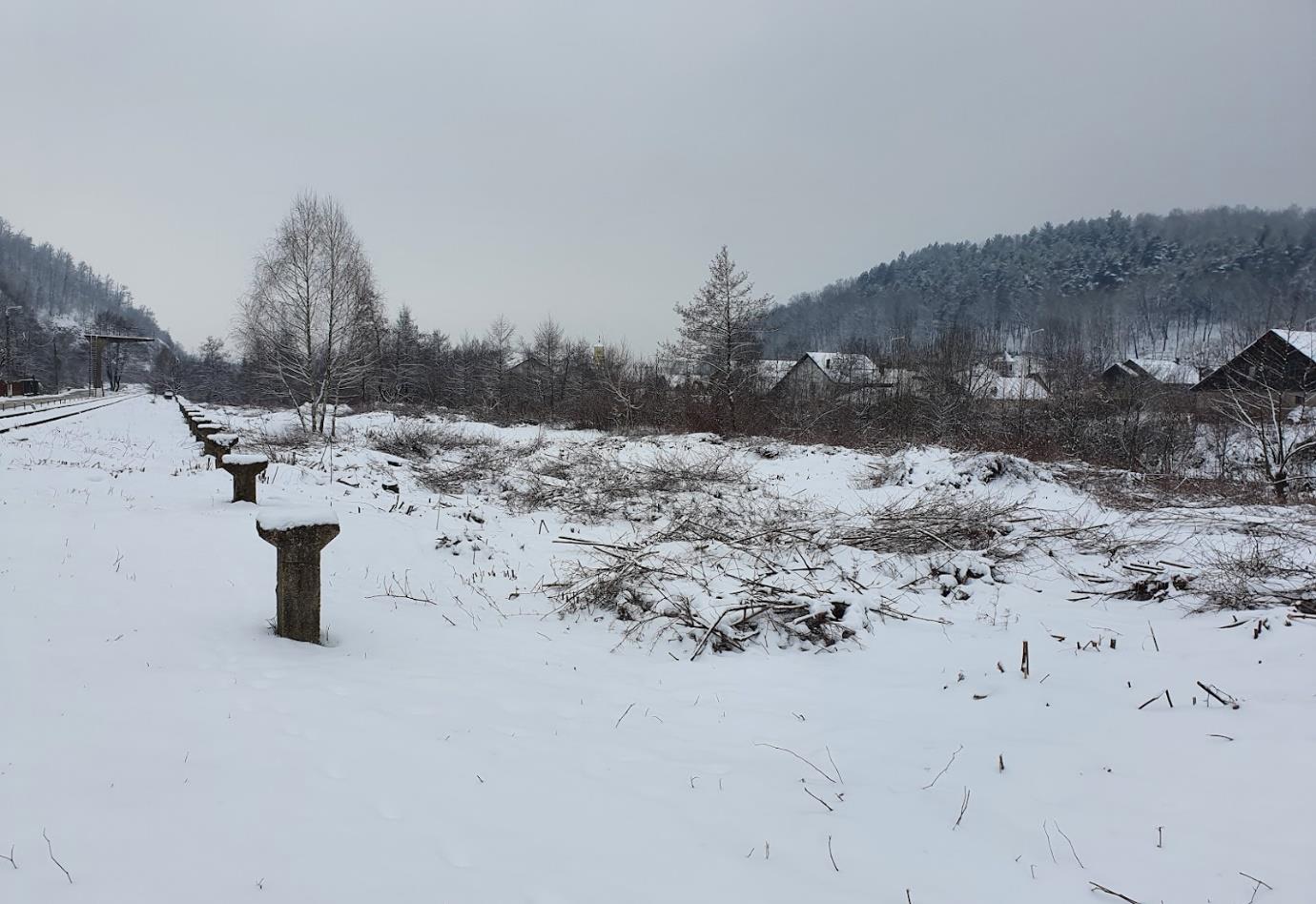 Figure 7. Ferneziu site and former rail line. Source: SPIRE- Technical Report D6.1.3 Final technical designs for pilot sites.
Figure 7. Ferneziu site and former rail line. Source: SPIRE- Technical Report D6.1.3 Final technical designs for pilot sites.
With phytoremediation methods applied in the city, adaptation and climate resilience work hand in hand with risk reduction strategies. They improve the urban environment and revitalize the urban land while strengthening the risk governance, enhancing preparedness, and enabling an effective response to recover and “build back better.”
How is the SPIRE project applying this methodology in Baia Mare?
A GIS Dynamic Atlas platform has been developed to track phytoremediation progress and plants status at the pilot sites (Romplumb, Ferneziu, Colonia Topitorilor, Urbis, and Craica).
A Conceptual Adaptive Site Management Application (CASMA) has been designed to score the proposed remediation options according to different measurements: local fit, phytoremediation capacity, life-cycle duration, the timing of the first harvest, time horizons, biomass produced and applications; value chains / cascading use, landscaping qualities and cost.
A remediation Toolkit guided by the CASMA provides a specialist catalogue based on soil HMC, remediation capacity per planting cycle, biomass harvest cycle, the cost-effectiveness of soil preparation and plantation, primary and secondary potential applications, and cascading uses, as well as a set of design options.
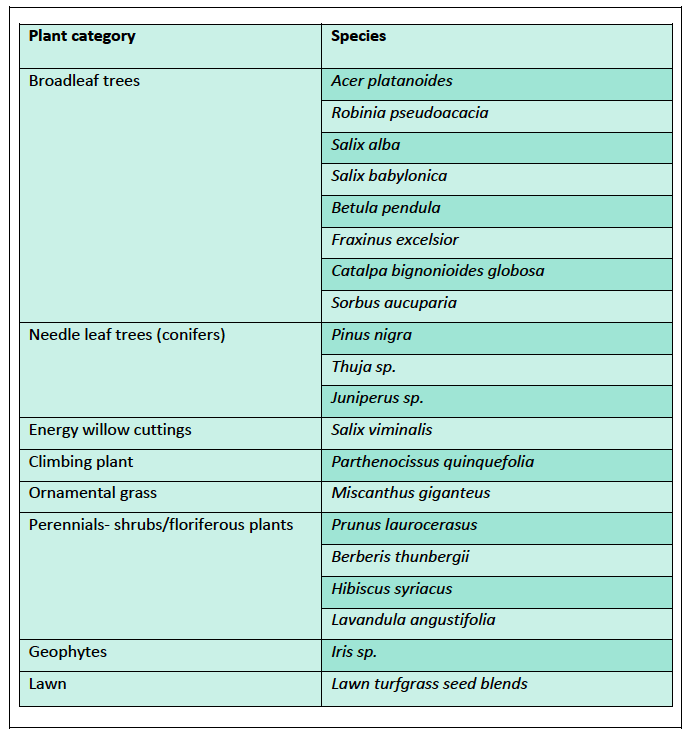
Fig.9. Species selected to be planted. Source: SPIRE - Technical Report D.6.2.11-Safety and health plan for the sustainable community use of the SPIRE productive landscapes
Finally, a set of selected plant species is proposed based on selected criteria:
- avoiding monoculture by using a mosaic of planting schemes that include woody plants as well as herbaceous species;
- providing a sensorial experience to the observer through colour, shape, and texture;
- choosing species with root depths suitable for contamination depth existing at the given site;
- integrating plant species assortment for accessible and sustainable landscaping (well-acclimatized plants, local plants, and low maintenance species);
- including some plants able to provide valuable long-term ecosystem services while considering the needs of the local fauna (urban birds, bees, and butterflies);
- abstaining from using edible plants if contamination is high enough that it can pose the risk of accumulating in plant organs at dangerous levels,
- choosing alternatives to common aromatic or medicinal plants as well as fruit trees that that could be picked by people.
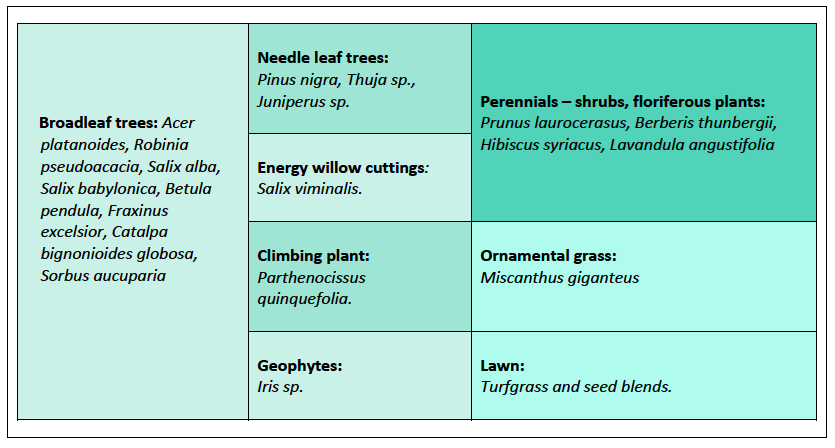 Fig.10. Plants selected for re-vegetation of SPIRE sites according to SPIRE Phytoremediation Toolkit and CASMA. Source: SPIRE project.
Fig.10. Plants selected for re-vegetation of SPIRE sites according to SPIRE Phytoremediation Toolkit and CASMA. Source: SPIRE project.
This leads us to the critical point of public access to pilot sites and the regulations and safety measures that need to be undertaken. The contaminants, once entering the plant, do not move freely. Instead, they become immobilized by binding to certain compounds and proteins, precipitated and stored in cell walls, or volatilized, being released into the atmosphere through plant transpiration and gas exchange. Thus, contact with contaminated plant does not immediately signify direct contact with contaminants in forms that can freely become absorbed through the skin (SPIRE - Technical Report D.6.2.11).
Several target groups have been identified as potentially exposed to contaminants, and have been proposed to undertake protective measures:
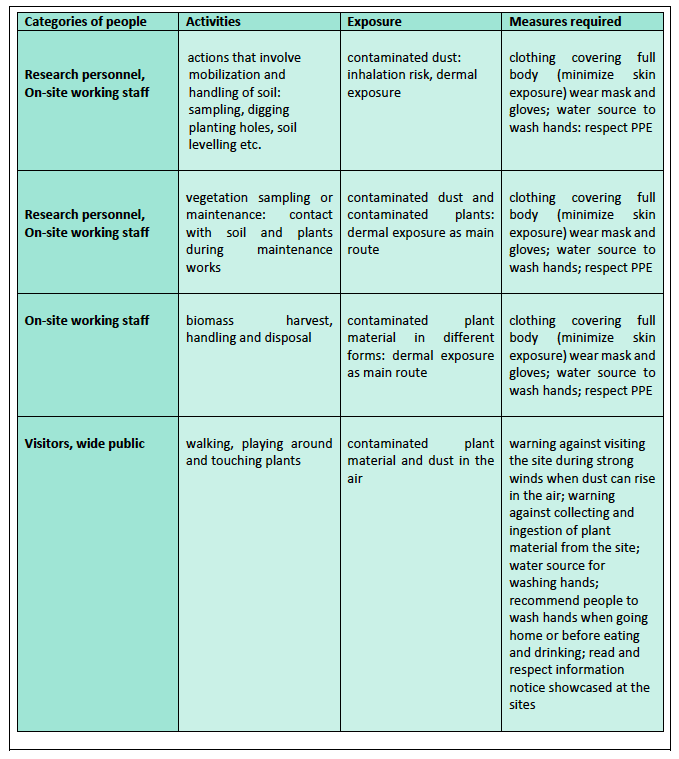
Fig. 11. Protective measures proposed per target / activity. Source: SPIRE - Technical Report D.6.2.11-Safety and health plan for the sustainable community use of the SPIRE productive landscapes
The Plantathlons activities carried out in the city during spring 2021 created a collaborative ecosystem supporting citizens-led actions and enhancing the community's involvement in the preparation, seeding, and planting for each of the pilot sites. Returning the pilot sites to the local community as a safe and attractive outdoor space will be the first step in building a shared future Master Plan BM 2050 for the city's metropolitan area.
Sustainable pedestrian walkways are proposed for inhabitants and visitors on phytoremediation sites. They allow accessibility and visibility without compromising people's safety and always having the phytoremediation sites separated from public parks (to avoid recreation activities in the reclaimed areas) with protection techniques and related signage, including information boards.
SPIRE phytoremediation techniques tested in Baia Mare have great potential for scalability and marketability. In emerging countries with significant population density and scarce funds available for environmental restoration, low-cost and ecologically sustainable remedial options are required to restore contaminated lands to reduce the associated risks.
- EC (2017). Nature based solutions. Available at: https://ec.europa.eu/info/research-and-innovation/research-area/environment/nature-based-solutions_en
- Vidican Roxana, Mihăiescu Tania, Crișan Ioana, Sebestyen Tihamer, Vajda Lajos, Pleșa Anca (2021), SPIRE -Technical Report D.6.2.11-Safety and health plan for the sustainable community use of the SPIRE productive landscapes
- Pilon-Smits, Elizabeth (2005). Annual Review of Plant Biology 56:1, 15-39. Available at:https://www.annualreviews.org/doi/abs/10.1146/annurev.arplant.56.032604.144214
- Lundén F. (2014) Läkande landskap – Att rena mark och vatten med fytoremediering i en urban kontext -. Swedish University of Agricultural Sciences. The Landscape Architect Program Alnarp. Available at: https://stud.epsilon.slu.se/6793/1/lunden_f_140604.pdf
- Naturvårdsverket och Boverket (2006) Förorenade områden och fysisk planering. Rapport 5608: ISBN1/5600/91-620- 5608-5/
- IPCC. (2014). Climate Change: Synthesis Report - Summary for Policymakers.
- UN Habitat / City Resilience Global Programme (2018) Climate Action Enhancer
- Carmen, Grigorescu, Kuksicsa, Sima (2013) The vulnerability of the Baia Mare urban system (Romania) to extreme climate phenomena during the warm semester of the year. Available at: https://www.researchgate.net/publication/280253789_THE_VULNERABILITY_OF_THE_BAIA_MARE_URBAN_SYSTEM_ROMANIA_TO_EXTREME_CLIMATE_PHENOMENA_DURING_THE_WARM_SEMESTER_OF_THE_YEAR
- Mihaiescu, T., Vidican, R., Miclaus, D., Plesa, A., Crisan, I. (2021). Perspectives on phytoremediation landscaping principles for post-industrial cities. Academia Letters, Article 309. https://doi.org/10.20935/AL309.
- Papina, Codruț (2021). SPIRE- Technical Report D6.1.3 Report on co-design workshops with the SPIRE Local Action Network
- SPIRE project (2020). Available at: http://spire.city
- Wuana, Raymond & Okieimen, Felix. (2011). Heavy metals in contaminated soils: a review of sources, chemistry, risks and best available strategies for remediation. Int Scholarly Res Network. 1-20.
About this resource
The Urban Innovative Actions (UIA) is a European Union initiative that provided funding to urban areas across Europe to test new and unproven solutions to urban challenges. The initiative had a total ERDF budget of €372 million for 2014-2020.
Similar content




